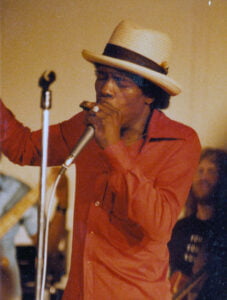The Harmonica Company
What is the Best Blues Harmonica?
Harmonicas come in all shapes and sizes, and it’s possible to play some semblance of the blues on virtually any type of harp. However, when most people think of a ‘blues harmonica’ they are generally picturing a ten hole diatonic, usually with a wooden comb, that will closely resemble something like Hohner’s Marine Band. It doesn’t have to be exactly like this, though, and in this article we’ll look at different approaches to the design of a diatonic harp, and how this determines which individual models are more or less suitable for the blues genre.
The first thing to get out of the way is tradition. Just because most of the famous blues harmonica players from the 1950s onwards used versions of the Hohner Marine Band with 7 limit just intonation and unsealed wood combs, it doesn’t mean that this is the ultimate harmonica for playing the blues. Aside from the fact that there are very few extant and still playable harmonicas of this kind, the exact choice of this harmonica by these players was more a case of expediency rather than the instruments themselves having some sort of mystical qualities. There really wasn’t much choice in the harmonica world in the 1950s and 1960s, so players generally played what was readily available.
This said, the Marine Band range is still an excellent starting point for those looking for a blues harmonica. Although it’s tempting to pick the traditional 1896 model from this range, I feel that this particular harmonica does tend to suffer from warping in the long run, making it uncomfortable to play (unless, of course, you’re a very ‘dry’ player, or are meticulous with your cleaning and drying routine). Instead, I would opt for the more expensive, but extremely expressive and similarly styled Crossover. This features a silky smooth and swell-free bamboo comb, but has the same traditional proportions and styling as the original Marine Band.
As mentioned earlier, though, it’s not obligatory to use a wood comb traditional style harmonica for the blues; many more modern designs have ABS or metal combs and still sound great. Examples of these are Hohner’s Special 20, with its plastic comb, and alloy comb varieties like Seydels’ 1847 Noble and Suzuki’s Promaster. Contrary to popular opinion, comb material makes relatively little difference to tone, and many of the metal comb harps’ tones have been described as ‘warm’ when we’ve completed blind tests. Similarly, whilst many traditionalists favour the sound of brass reeds for blues playing, this hasn’t been borne out when we’ve conducted back to back tests, such as in this video comparing Suzuki models with brass and bronze reeds.
For a raspy and loud harp that lends itself well to blues playing, especially when amplified, I would recommend the Hohner Rocket Amp. This features the same reed plates as the Special 20, but a nicer shaped comb with holes that are designed to produce more volume. The Amp version dispenses with the side vents of the standard Rocket, which means all the sound goes into the mic, helping to overdrive a nice tube amp and giving that classic distorted blues sound.
If you’re willing to shun tradition, and the Richter tuning system entirely, there are several harmonicas that feature alternate tunings that make playing blues licks more intuitive. Hohner’s recent Pentaharp model provides easy access to the pentatonic scale in a way that will make it feel particularly familiar to guitarists. Brendan Power’s PowerBender and PowerDraw tunings (available on his own models and on some Seydel harmonicas) gives easier access to notes that you typically bend in the blues. In a similar vein, Seydel’s Wilde Rock tuning makes guitar-style blues licks much easier to achieve on the harmonica. Whilst some traditionalists will turn their noses up at such tunings, it’s worth remembering that the Richter tuning itself was never designed for blues – it was created originally to facilitate the playing of German ‘oom-pah’ music – and it has some shortcomings, not least of which is that access to full chromaticism via bending isn’t possible without mastering the difficult technique of overblowing.
There are some harmonicas, though, that just won’t be suitable for the blues. Generally, anything with ‘octave’ or ‘tremolo’ in the title will mean that the harp features an extra set of reed plates, tuned an octave lower or slightly higher than the standard reed plates, respectively. This makes bending problematic, even before the different tuning schemes are taken into account, and consequently renders them unsuitable for most blues playing.
As ever, though, the best blues harp is really the one with which you, personally, feel most comfortable when playing the blues.
JP
The post What is the Best Blues Harmonica? appeared first on The Harmonica Company.
Read More
This article is from an external source, and may contain external links not controlled by Empeda Music.
